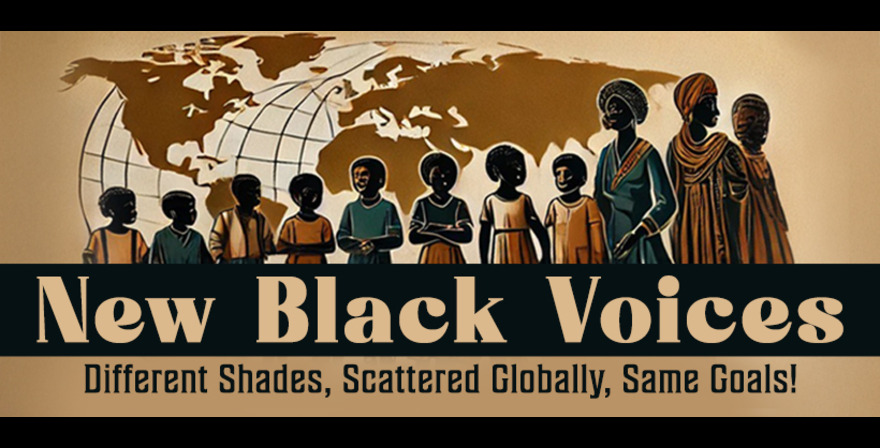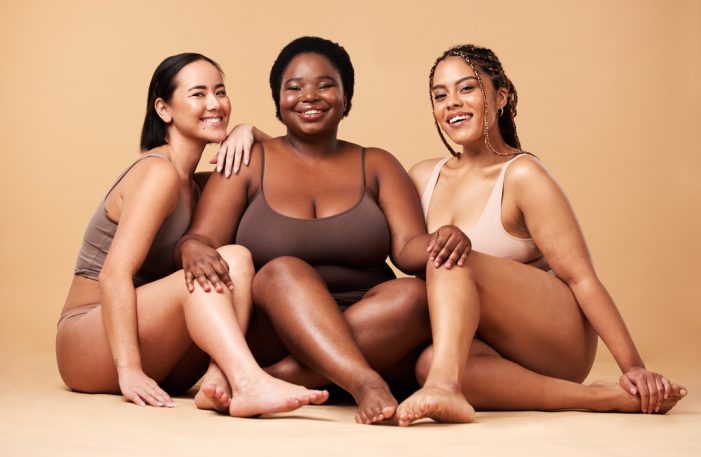By Pearl Phillip | Editorial credit: Yuri A. / shutterstock.com
The body positivity and inclusivity movement has emerged as a powerful cultural force, reshaping societal attitudes toward beauty, self-worth, and identity. It promotes acceptance of all body types, challenges historical beauty standards, and fosters self-love and respect for people who don’t conform to conventional ideals. Body positivity is about celebrating physical appearance and recognizing the deep ties between body image, mental health, and self-esteem. This analysis explores how body positivity relates to mental well-being, challenges entrenched beauty norms, encourages self-acceptance, and influences how individuals—especially those who don’t fit traditional ideals—create content to inspire others. The cultural impact of this movement is profound, shifting societal perceptions of beauty, compelling industries to embrace diversity, and enhancing mental health awareness and self-care practices.
Ties Between Body Positivity, Mental Health, and Self-Esteem
The link between body positivity and mental health is central to the movement. Body positivity not only empowers individuals by encouraging them to reject societal pressures to conform to narrow definitions of beauty, but also inspires them to embrace their bodies as they are. This shift is crucial for mental health, as poor body image and the constant pursuit of an idealized body can lead to mental health struggles such as low self-esteem, anxiety, and depression.
For many, negative body image starts at an early age and is often exacerbated by societal pressures and media representations that favor specific body types. Historically, thin, Eurocentric beauty standards have dominated advertising, fashion, and entertainment, promoting the idea that beauty is limited to those who fit these narrow ideals. This exclusionary view has left many individuals feeling inadequate or unworthy, contributing to a culture where self-worth is tied to appearance.
Body positivity counters this narrative by promoting self-love regardless of size, shape, or appearance. Embracing body positivity allows individuals to shift their focus from achieving external validation through appearance to fostering internal self-acceptance. This change is significant for mental health, as individuals who cultivate a positive body image are more likely to experience higher self-esteem, better coping mechanisms, and improved emotional resilience. This emphasis on self-love empowers individuals and boosts their confidence.
In essence, body positivity functions as a form of self-care. By fostering a compassionate relationship with one’s body and encouraging self-acceptance, individuals can alleviate the pressure to conform to unrealistic standards, thereby reducing feelings of shame or inadequacy. For many, this has been a transformative journey—one that has positively impacted their mental health and quality of life.
Challenging Beauty Standards that Favor Thin, Eurocentric Ideals
One of the most significant aspects of the body positivity movement is its challenge to beauty standards that have historically favored thin, Eurocentric ideals. For decades, mainstream media and advertising have centered on a narrow definition of beauty: slim, fair-skinned, with specific facial features and proportions. These ideals marginalize individuals who don’t fit within these parameters and create unrealistic expectations for those who try to achieve them.
Body positivity advocates push back against these beauty norms by celebrating diversity in body shapes, sizes, skin tones, and abilities. Influencers and public figures who champion body positivity—such as Lizzo, Ashley Graham, and Jameela Jamil—use their platforms to challenge the exclusivity of traditional beauty standards and highlight the importance of representation. They actively speak out against practices like airbrushing and retouching, which reinforce unattainable ideals, and call for more authentic portrayals of beauty in media.
The movement’s emphasis on inclusivity encourages individuals to embrace aspects of themselves that have historically been viewed as flaws, such as stretch marks, cellulite, or scars. By normalizing these characteristics and promoting the idea that all bodies are worthy of love and respect, body positivity creates a more expansive definition of beauty that celebrates individuality rather than conformity. This celebration of diversity makes everyone feel included and valued.
Challenging Eurocentric ideals is also critical for addressing beauty standards’ racial and cultural dimensions. The body positivity movement, which is inherently intersectional, seeks to amplify the voices and experiences of women of color, who have often been underrepresented or misrepresented in mainstream media. The movement aims to dismantle the notion that beauty must fit within rigid, white-dominated paradigms by embracing a broader range of skin tones, body shapes, and hair textures. It also advocates for the visibility and acceptance of bodies of all genders and abilities, recognizing that the struggle for body acceptance is not limited to one specific group but is a universal issue.
Body Acceptance and the Worth of All Bodies
Body acceptance is a core message of the body positivity movement, which advocates for the radical idea that all bodies—regardless of size, shape, ability, or appearance—deserve love and respect. This concept is central to the movement’s mission of challenging the social hierarchies that have long dictated who is deemed attractive or valuable based on physical appearance.
Body acceptance goes beyond mere tolerance of one’s body; it involves embracing and celebrating it, even in the face of societal pressures to change or “improve” certain aspects. This shift in perspective encourages individuals to focus on the functionality and strength of their bodies rather than solely on how they look. It also promotes the understanding that self-worth is not contingent on adhering to external beauty standards but rather on cultivating self-love and respect from within.
The rise of social media platforms has been instrumental in spreading the message of body acceptance. Influencers, activists, and everyday users who don’t fit conventional beauty standards have created online communities where they share their experiences, challenges, and victories in embracing their bodies. Through these platforms, individuals showcase their everyday lives, including the joys and struggles of body acceptance, which normalizes diverse body types and encourages others to feel confident in their skin. Social media has played a significant role in amplifying the voices of those who have been traditionally marginalized in beauty standards, and in promoting a more inclusive and diverse representation of beauty.
This movement toward body acceptance is especially important for marginalized groups—such as plus-sized individuals, people with disabilities, or those with visible skin conditions—who have historically been excluded from mainstream narratives about beauty. By promoting body acceptance, the movement helps to dismantle these exclusionary practices and create a more inclusive, affirming space where all bodies are celebrated for their uniqueness.
Promoting the Idea That All Bodies Are Worthy of Love and Respect
At its core, the body positivity movement promotes the idea that all bodies are worthy of love, respect, and dignity. This message is a direct challenge to the pervasive belief that only certain body types—often those that conform to thin, able-bodied, and Eurocentric ideals—deserve admiration and acceptance. By rejecting this notion, body positivity creates a space where individuals of all shapes, sizes, and appearances can feel valued and respected, regardless of how they align with traditional beauty standards.
This shift in perspective is particularly empowering for those who have felt marginalized or excluded due to their bodies. For example, people with larger bodies have long been subject to fatphobia and body shaming, which often leads to feelings of inadequacy and low self-esteem. The body positivity movement works to combat these negative attitudes by encouraging people to celebrate their bodies as they are and by challenging harmful societal norms that equate thinness with health or beauty.
Similarly, the movement advocates for the rights and visibility of people with disabilities, encouraging society to view these individuals with respect and admiration rather than pity or discomfort. By promoting inclusivity and body acceptance, body positivity ensures that all people—regardless of their physical differences—are seen as valuable and deserving of love.
Shifting Societal Views on Beauty and Body Standards
The cultural impact of body positivity is most evident in how it reshapes societal views on beauty and body standards. Traditional beauty ideals, historically narrow and exclusionary, are being increasingly questioned and redefined as the movement gains momentum. The growing acceptance of diverse body types, skin tones, and abilities in media, fashion, and advertising signals a broader shift toward more inclusive representations of beauty.
The body positivity movement has prompted a critical examination of how media and entertainment influence perceptions of beauty. As consumers demand more diversity in the images and narratives they see, brands and media outlets are beginning to respond by featuring a wider array of body types and appearances in their campaigns. This shift challenges the dominant narrative that beauty must conform to specific, often unattainable, standards and opens the door for more authentic, inclusive portrayals of people in all their diversity.
The Role of Inclusivity in Diversifying Fashion and Beauty Representation
As societal views on beauty evolve, the fashion and beauty industries have had to adapt to meet the demands for more inclusive representation. Historically, these industries have been criticized for promoting a narrow, often unattainable ideal of beauty—one that favored thin, tall, non-disabled, and predominantly white models. In recent years, however, the body positivity movement has pushed for greater diversity, leading to a noticeable shift in how fashion and beauty brands approach representation.
Major fashion brands are beginning to embrace size inclusivity, featuring plus-sized models on runways, ad campaigns, and fashion spreads. Beauty companies are also diversifying their product lines, offering a wider range of foundation shades, skincare products, and makeup options that cater to a broader spectrum of skin tones and types. This push toward inclusivity reflects a broader societal demand for representation that reflects the diversity of real people rather than conforming to outdated beauty ideals.
The result of this shift is a more inclusive industry and a broader cultural acceptance of diverse body types and appearances. By featuring models of different sizes, races, genders, and abilities, the fashion and beauty industries are helping to normalize diversity and challenge the notion that beauty must fit within specific parameters. This, in turn, empowers individuals to feel confident and comfortable in their skin, regardless of how they measure up to conventional standards.
Improvements in Mental Health Awareness and Self-Care Practices
The body positivity movement has also significantly impacted mental health awareness and self-care practices. As the conversation around body image becomes more inclusive and accepting, people are encouraged to prioritize their mental and emotional well-being alongside their physical appearance. This shift in focus has increased emphasis on self-care, self-compassion, and the importance of mental health in overall well-being.
Body positivity promotes the idea that caring for oneself goes beyond trying to change or perfect one’s physical appearance. Instead, it encourages people to engage in practices that nurture both the body and the mind, such as practicing mindfulness, engaging in joyful movement, and setting boundaries around body shaming or negative self-talk. This holistic approach to self-care fosters a sense of empowerment and emotional resilience, helping individuals develop a more positive relationship with their bodies and mental health.
Reflecting Society’s True Diversity
The body positivity and inclusivity movement has sparked a cultural revolution, reshaping societal attitudes toward beauty, body image, and self-worth. By challenging long-held beauty standards, promoting body acceptance, and advocating for the worthiness of all bodies, the movement has created a more inclusive and affirming space where individuals can feel valued and respected. Its impact on mental health, self-esteem, and self-care practices is profound, encouraging people to embrace their bodies and prioritize their well-being.
The cultural shift toward inclusivity is also driving changes within the fashion and beauty industries, which are increasingly diversifying their representations of beauty to reflect society’s true diversity. As the body positivity movement continues to grow, its influence on individual lives and the broader culture is undeniable, creating a world where all bodies are celebrated, respected, and worthy of love.
Pearl Phillip is the host of Beauty, Health & Wellness Radio Show and Podcast, and Managing & Editor-in-Chief of Caribbean American Weekly, The Immigrant’s Journal & Workers’ World Today Publications and a Consultant with New Black Voices. Learn more at http://www.

